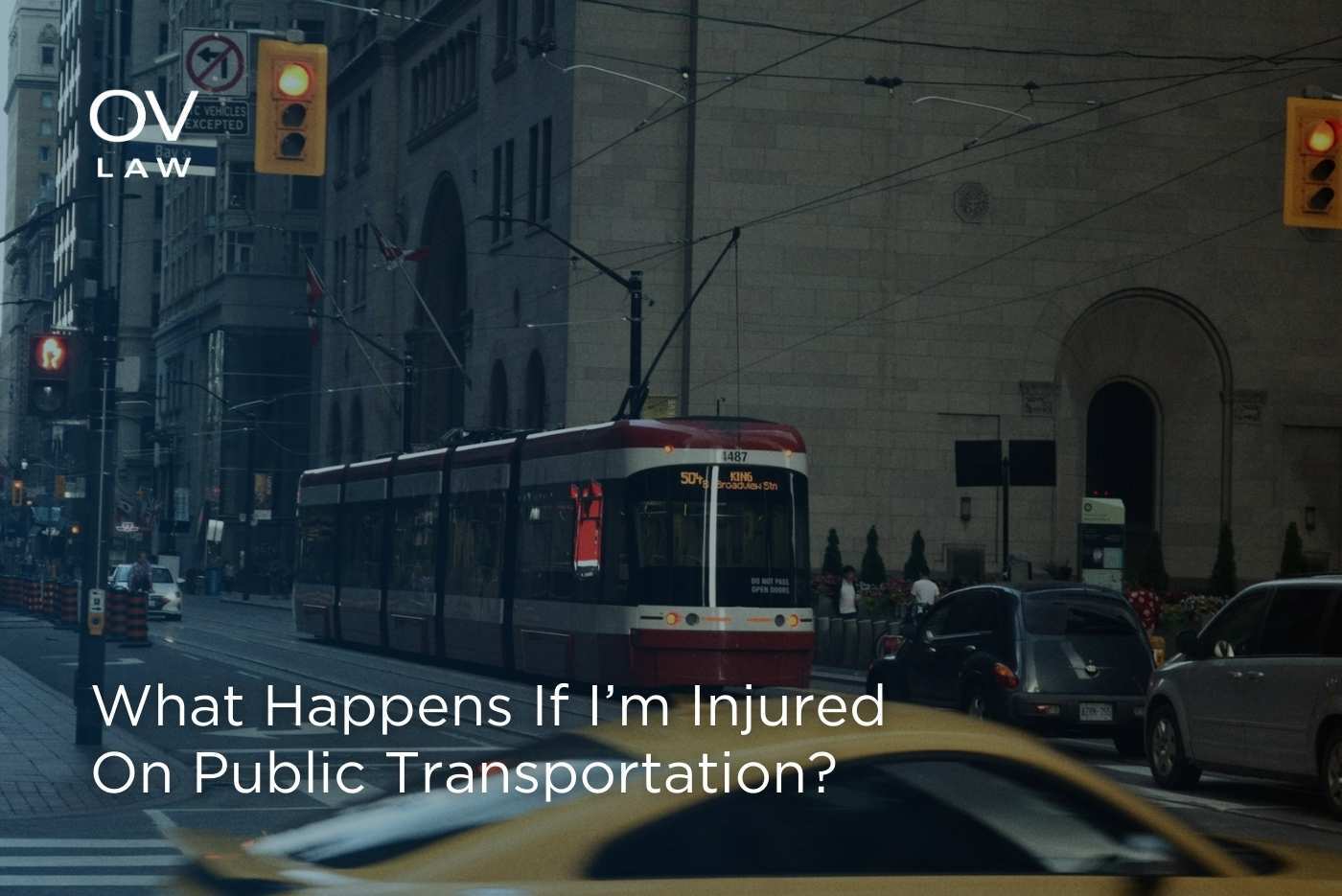What Happens If I’m Injured On Public Transportation?

Ontario’s public transportation networks are essential to many residents. In Toronto, more than 2.5 million people use the TTC daily. In Ottawa, over 340,000 individuals rely on OC Transpo each day. Although transit operators work to keep riders safe, accidents still happen. This blog outlines the key issues someone may encounter if injured while using public transportation.
Bus crashes are a common source of public transportation injuries. If you are injured in an accident while riding a bus, you have legal options. In a single-vehicle accident, you can sue the bus driver and the bus owner, often the transit commission, for negligence. If another vehicle strikes the bus, you can sue both the other vehicle’s driver and owner, as well as the bus driver and owner. The parties can then determine their respective share of responsibility.
Passengers on buses may be subject to contributory negligence. This occurs when a passenger’s own lack of care contributes to the harm or injury they suffer, potentially reducing their compensation. For instance, if a passenger stands without holding a safety bar and is injured, their damages may be reduced. Similarly, if a passenger stands in front of the yellow driver line when the bus is not full, and a sudden stop causes them to be thrown through the bus’s windshield, their compensation may also be reduced.
In Ontario, individuals are generally entitled to accident benefits (regardless of fault) if they are injured in an accident arising from the use and operation of an automobile. These benefits cover medical expenses, rehabilitation, attendant care, and lost income. However, there are exceptions for public transit vehicles as defined in the Insurance Act.[1] If you are injured in a public transit vehicle that does not collide with another vehicle or object, you cannot claim accident benefits.[2] For example, if you are hurt because a bus stops suddenly but does not crash, you cannot access accident benefits. While you can still sue the bus driver and owner for the sudden stop, you will not have access to Ontario’s no-fault benefit system for the interim funding of treatment, care, or lost income. This is commonly referred to as the “No Crash, No Cash” rule.
You can also pursue transit authorities for incidents that occur on their premises. For example, if you slip and fall in a bus station, you can pursue the occupier of that station under Ontario’s Occupiers’ Liability Act. Occupiers have a duty to keep people reasonably safe while on their premises.[3] Therefore, if you slip and fall in a bus station, or are assaulted by a dangerous individual in a station with insufficient security, you can sue the occupier for failing to ensure the premises are reasonably safe.
This overview covers the most common liability and benefits issues related to injuries involving public transit. In reality, countless variations and scenarios exist that may raise different concerns and considerations. If you have been injured while using public transit, contact an experienced personal injury lawyer promptly.
[1] Insurance Act, s.224 “public transit” and “public transit vehicle”
[2] Insurance Act, s.268(1.1)
[3] Occupiers’ Liability Act, s.3(1)
